A Different Path
Creative planning to avoid the weather

Flying is a thinking game, and nowhere is that more evident than with weather. Most flying involves regular procedures and repeatable actions. But weather is dynamic, can affect different segments of the flight, and has a habit of being unpredictable. Learning to understand weather and cope with the chaos it brings will make your flying safer and more enjoyable.
Ground school describes weather decision making in stark dichotomies. It’s either good or bad; we go or we don’t go. And when the weather truly is beautiful or terrible, the decision is that easy. It’s clear, sunny, and not too windy, so go fly. Or the ceiling is at 200 feet with a quarter-mile visibility—it’s time to stay on the ground.
The challenge lies in those middle days, and unfortunately that’s often what the weather gives us. It’s fairly windy, the clouds are increasing, or maybe there’s a storm system on the way. Those days require more planning, and more complex decisions than simply go or no-go. If there’s significant weather along your planned route, how can you safely make it to your destination? To help make those decisions, you need two skills: knowledge of the weather and a set of strategies to address this fickle factor. Let’s forget about the weather theory and talk strategy.
The Turnback
The simplest thing you can do in the face of deteriorating weather in flight is simply to turn around and call it a day. This is not the flight of “fight or flight.” It’s the smart, strategic retreat of a battlefield commander working with a few ragtag soldiers who are staring down an entire army. Weather is the most formidable challenge we face when flying, and the consequences of getting it wrong are significantly more painful than the triumphs of getting it right.
The most difficult part of The Turnback is deciding to do it. Maybe it’s because pilots are naturally mission-driven, but once we start a flight, most of us are loath to not finish it. Unfortunately this success-at-all-costs mentality gets us in trouble too often. To combat the mission mindset, we should think of the destination as an optional outcome. If you don’t start with the idea that you must finish, you’re much more likely to make the right decision when faced with a weather challenge. So the best way to institute The Turnback is to give yourself permission to do it from the beginning, not when you’re faced with making the decision quickly.
Once you’ve decided to head back home, putting your decision in action is easy. Reverse your course 180 degrees, let air traffic control know of your plans, and then verify you have enough fuel to make it. Don’t forget that the effects of winds aloft on your groundspeed will now flip.
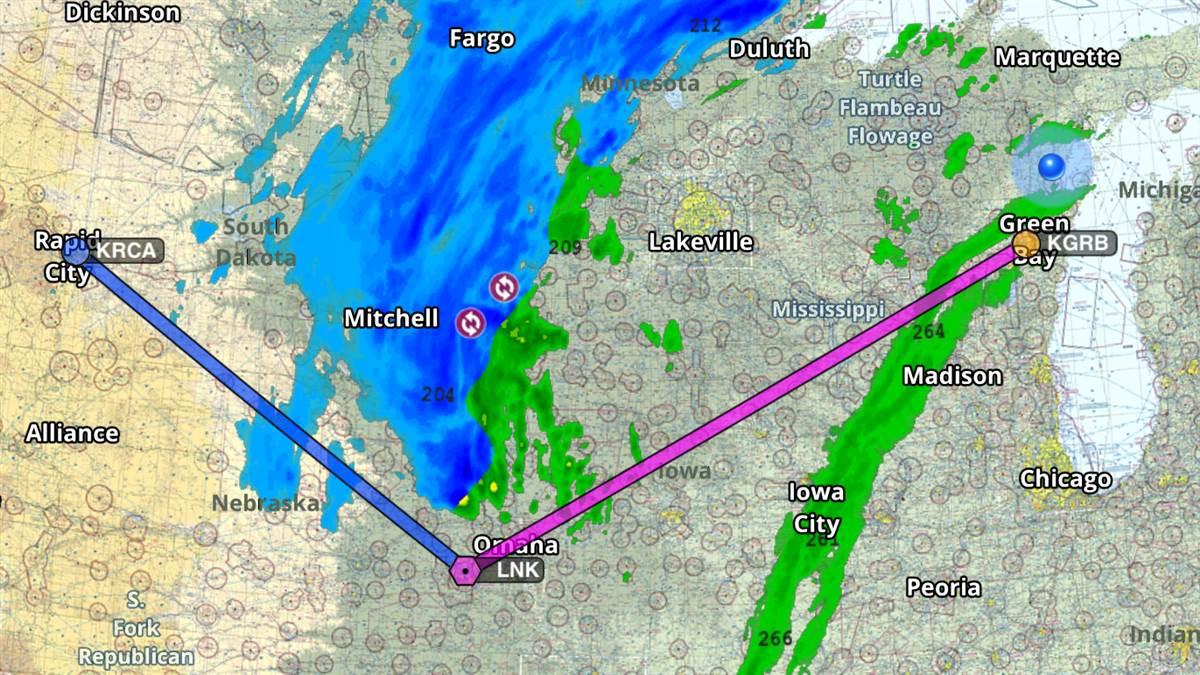
No one would blame a pilot for deciding not to make this flight from Green Bay, Wisconsin, to Rapid City, South Dakota, after looking at the weather. Rain and snow bisects the route, and that can mean ice. But the pilot who made the flight got creative and completely avoided the weather by flying to the south. Such a large diversion only added about 110 miles to the flight, or less than an hour in the airplane he was flying.
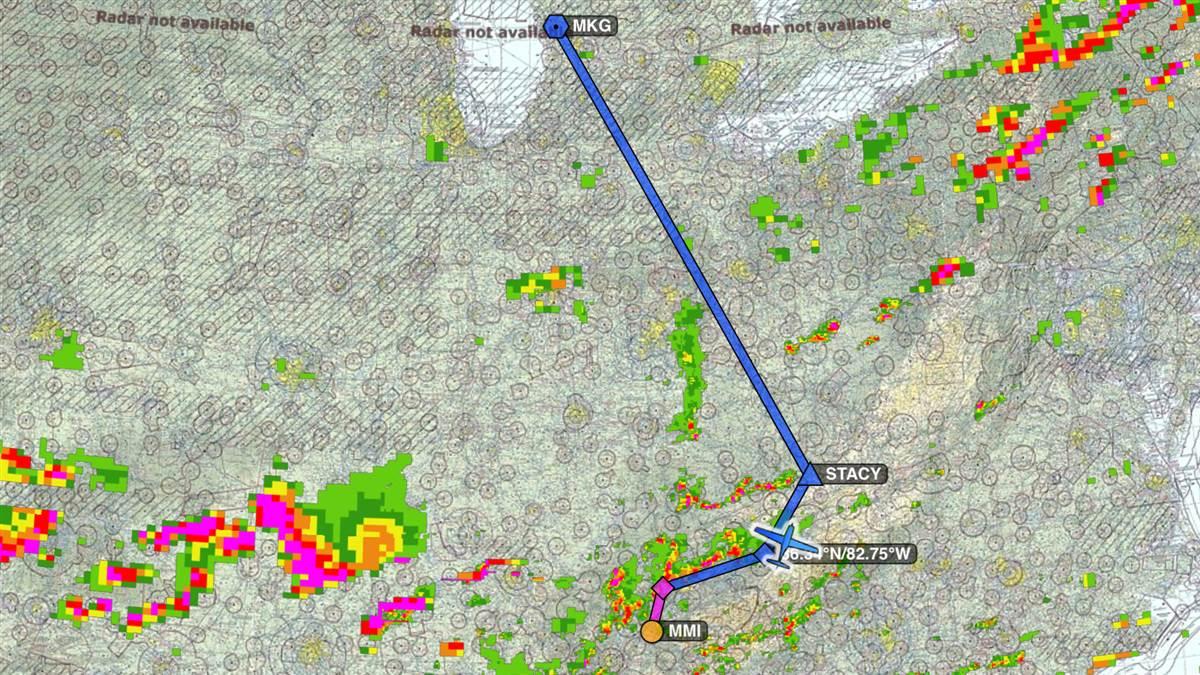
Pilot and examiner Jason Blair was flying from Louisiana to Michigan on this day. Even though a line of intense storms crossed his path, he departed knowing there were options. After not finding a suitable hole in the line of storms, he paralleled them before turning north toward home. An iPad makes this sort of diversion easy to execute in real time.
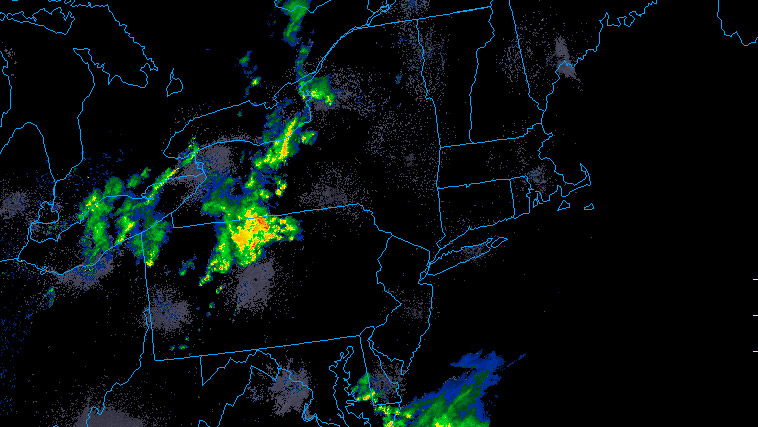
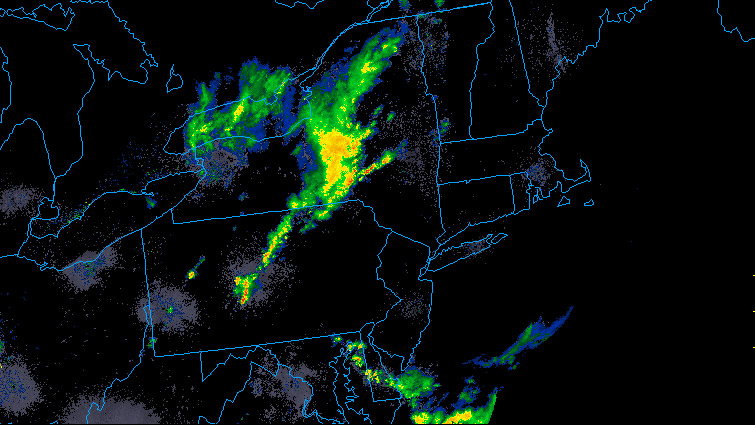
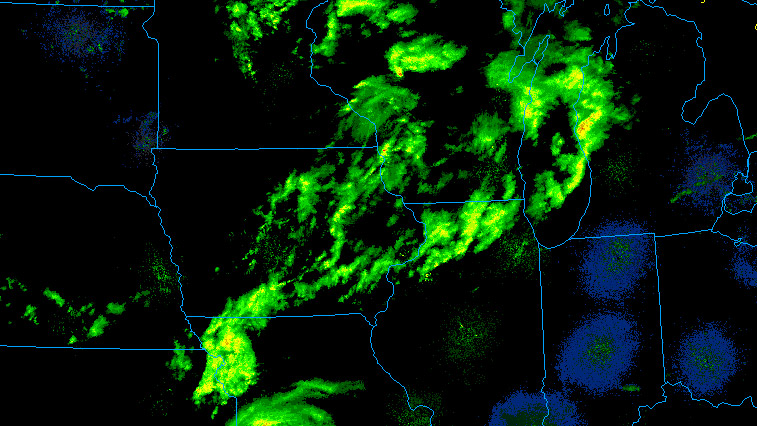
The Delay
If you don’t like the weather, wait five minutes. It’s a cutesy expression that people from practically every region of the country think they originated. Despite being a bit trite, there is some truth to the phrase. There are many days when weather changes rapidly—from sun to snow to rain, and back to sun in a few minutes. Regardless of the specifics, the expression teaches a great weather lesson: Patience is rewarded.
Weather moves in a series of large patterns and areas of like pressure. As these areas battle for position, local conditions often change. And with a few exceptions, delaying takeoff by as little as an hour or as much as a day will result in significantly better weather.
Fog is a great example. In many parts of the country, fall brings fog that forms overnight and clears sometime in the morning. You may wake up to 200 feet overcast and a quarter-mile visibility, but by 10 a.m. it could be clear and more than 10 miles. Florida has summer thunderstorms, and New York has lake effect snow. Most regions have a weather phenomenon that speaks to regular and changing conditions.
The most difficult part of The Turnback is deciding to do it. Give yourself permission to do it from the beginning, not when you’re faced with making the decision quickly.The key to getting The Delay to work is to plan for it well in advance of a trip—and consider putting in place a related strategy, The Advance. If your plan is to fly an hour to get breakfast, check ahead of time to make sure the restaurant serves lunch so you can easily use The Delay and switch meals. For longer trips, think more of your target arrival and be flexible on departure. If you must be at the beach by Friday, keep Thursday clear in case you need to use The Advance and leave earlier. If you ask most experienced instrument pilots they’ll you that weather rarely causes a complete flight cancellation. We’ve all had to use The Delay or The Advance, but rarely had to sit it out completely.
The Chaser
This strategy only works in specific weather situations. When a strong line of thunderstorms comes through, the weather often is intense and relatively short-lived. If the former is going to work against us, we can use the latter to our benefit.
Let’s say you’re flying 500 miles west to east and a cold front is splitting the route in half, moving toward your destination. You can decide to use The Delay and stay home until it completely blows past your destination, or you can use The Chaser and take off as scheduled. Having the right plan is important in this situation to make sure you apply the strategy safely. The goal isn’t to fly up to the front and pick your way around the storms. Instead, chase the front, continuing only as far as the next airport allows. As you get closer to the line of weather, start looking for spots to hold. If you’re almost to your destination, that may literally mean flying a holding pattern. If you’re 100 or more miles away, it might be time to land short and check out the local airport.
The beauty of The Chaser is that you’re optimizing your chances for success by continuing with your original plan, but in a way that avoids heavy weather. As long as you continue to think about your flight as one airport to the next, you’ll always leave yourself an out—and have a plan to land as soon as things get dicey.
The alternative to this method is The Head-On, which calls for flying toward an approaching front. If the front is well defined and moving quickly, The Head-On is a great way to get down the path toward your destination with minimal delays. Fly toward the weather and when it starts to deteriorate or as you near the storms, land; grab a bite, check your email, or take a snooze, and wait for the storms to go over you. Then take off again and enjoy the ride in nice weather.
The Big Picture
When you’re flying from Louisiana to Michigan, overflying Virginia would only seem to make sense if you’re lost. But for pilot and designated examiner Jason Blair, sometimes the best path between two points is a mix of jagged edges and random turns—random until you see the radar. Blair is a proponent of The Big Picture approach, a strategy that calls for avoiding weather, rather than trying to pick between storm cells. “I’m inclined to go 100 miles out of the way, rather than through it,” he says.
Blair’s approach makes sense when you’re looking at a flight of a few hundred miles. Similar to The Chaser, the main theme is to be making forward progress, regardless of whether that progress is in a straight line. Blair shows evidence in numerous iPad screen grabs showing winding course lines that completely avoided bad weather. In most cases, the total trip time is only a few minutes more.
On the Louisiana to Michigan trip, Blair flew up to a defined line of weather, hoping for a wide hole. When none appeared he paralleled the storms, flew around the line, and headed for home. Total penalty for this wacky route? Around 60 miles, or 15 minutes in the airplane he was flying.
The Big Picture says that the safest way to beat weather is to avoid the fight, and that a little bit of extra flight time is usually all it takes. Blair says he doesn’t fully trust weather data in the airplane, and avoidance is the better approach. “It may take a little longer, but you may make your weekend plans and be safer at the same time,” he says.
To use The Big Picture, consider large-scale weather patterns and their movements. Try to think hours ahead while you anticipate the weather’s motion, and be creative. Can you go south and then west instead of southwest, or maybe north before heading east? Sometimes an entirely different route works well, too. On one flight Blair added more than 100 miles to a trip, or 40 minutes. A large section of icing conditions blocked the straight-line route, so he went south around it, and then north after passing it. That may seem like a lot of time to add to a flight, but in many cases it may mean the difference between staying home and making a planned trip.
When you start to think beyond the black and white choices of going or not going, a range of options come forward to suit almost any situation. If you plan ahead, are creative, and are flexible, weather won’t spoil those plans very often.



